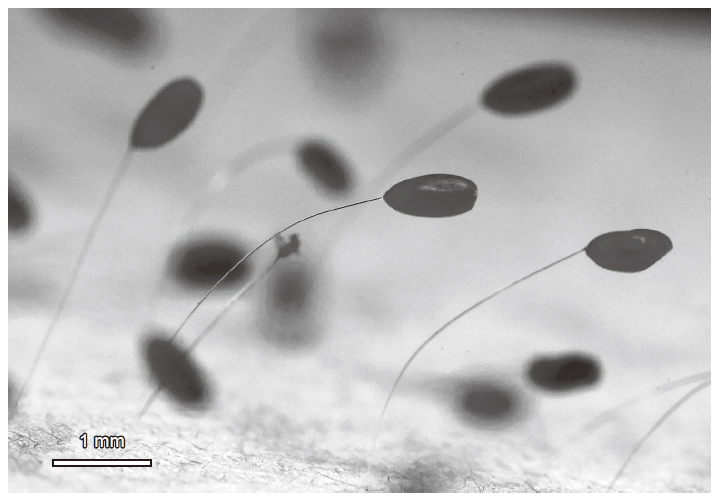All issues

Author:Pei-Chen Hsu, Yew-Jen Dong, Jih-Zu Yu, Feng-Chyi Lin, and Ming-Yao Chiang*
Abstract:
Mallada basalis (Walker), commonly called the green lacewing, is beneficial for agricultural pest control in Taiwan. The number of green lacewing eggs distributed on a flat surface is limited by a thin stalk structure. Therefore, removal of the egg stalks requires considerable manpower and transportation space. Moreover, it also limits the applicability of such eggs in large-scale experiments and increases the difficulty of field application. In this study, an electric clipper was used to remove lacewing egg stalks, and the eggs were harvested using a cyclone separator. No significant difference was observed in eggs harvest rate (90.2% ± 0.6% vs. 80.0% ± 2.3%) between clipper and sodium hypochlorite method to harvest eggs of M. basalis. However, significant differences were measured in hatching rate (80.8% ± 2.8% vs. 70.0% ± 3.6%) and adult harvest rate (54.2% ± 3.4% vs. 46.7% ± 4.1%). Results showed that the use of hair clipper and cyclonic separation method for lacewing egg harvesting had the advantages of high speed, small instrument size, convenient operation, and high safety. As such, this method provides potential applicability in developing a small harvesting system for green lacewing eggs.
Key words:Mallada basalis (Walker), Egg stalk, Harvesting, Clipper, Mass rearing
Download:![]() PDF Links
PDF Links
- 1. Using Digital Soil Mapping to Predict Soil Organic Carbon Stocks in Zhuoshui River Basin
- 2. Development of a Technique for Forecasting (or Pre-Detection) Anthracnose Disease Incidences of Green Mature Bagging Mango Fruits
- 3. Taxonomic Review of the Genus Asiophrida Medvedev, 1999 in Taiwan (Insecta: Coleoptera: Chrysomelidae: Galerucinae: Alticini), with Notes on Biology
 Submit your manuscript
Submit your manuscript
 Guide for authors
Guide for authors